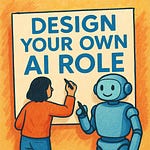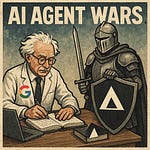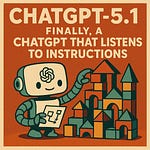Why I Wrote This (And Why You Should Care)
For six months now, I've been getting the same question over and over: "Nate, where's the definitive guide to AI agents?" And every time, I've had to give the same frustrating answer: "It doesn't exist yet." The agent space has been moving too fast, with architectures spinning up and spinning down, bitter fights breaking out over technical approaches, and a fundamental confusion about what agents even are.
Most people—CEOs, marketers, PMs, almost everyone other than engineers (and some of them too)—genuinely don't understand that an AI agent is simply an LLM plus tools plus guidance. That's it. I've had executive conversations where leaders ask me if they need agents when they don't even have basic chatbots working yet. The hype is so far ahead of understanding that we're setting ourselves up for massive disappointment and wasted budgets.
But something shifted recently. We've finally seen enough real implementations—both spectacular successes and expensive failures—to start drawing meaningful patterns. Wells Fargo's 245 million interactions without human handoffs. MD Anderson's $62 million loss on IBM Watson. McDonald's drive-thru disaster with viral TikTok failures. These aren't just isolated incidents; they're data points that reveal the architecture decisions separating success from catastrophe.
I've watched this unfold while trying to be helpful with a few companies here and there, and with lots of operators fielding questions from practitioners who need real answers, not marketing promises. The agent articles that come and go focus on the shiny new features or the latest model capabilities. And I love all the model maker agent guides, but it’s hard to write for the industry when you’re also a model maker. What about a third perspective? I don’t think it exists, at least not at this level of detail. None of them tackle the fundamental question every organization faces: How do you actually implement this stuff without burning money and credibility?
This guide is my attempt to create the one-stop resource I wish existed six months ago. It's necessarily long—about 30 pages—because the problem is complex and the stakes are high. If agents are going to be the most hyped topic of 2025 (and they are), then we need to start these conversations from a foundation of actual understanding, not wishful thinking.
This isn't about avoiding AI agents. It's about approaching them with the technical vocabulary and strategic frameworks needed to separate the signal from the noise. Because the window for competitive advantage is narrowing, and the organizations that get this right early will have sustainable advantages that late movers simply can't replicate.
Note: This article is written like a series of three nesting dolls for clarity. It’s written in a slightly different voice as well, and that’s on purpose. Think of it as Nate + a little bit of those classic 1997 super factual computer manuals.
Why? Because I’m tired of hype I think. I just want something very dry and very clear that people can refer to. So here it is! This is what you can expect:
The TLDR gives you a 1 minute read of the heart of the article.
The Executive Summary gives you a 3 minute read of the key decision levers.
The remainder of the article lets you dive deep on agents and agentic frameworks.
What You'll Find Inside This Guide
AI Agent Architecture Deep Dive: Complete technical breakdown of single vs. multi-agent systems, including performance benchmarks, cost implications (3-10x difference), and decision frameworks for choosing the right approach for your use case.
Memory Management & State Architecture: Advanced strategies for working memory, episodic memory, and long-term memory systems, plus security considerations for memory poisoning attacks and data protection in production AI agent deployments.
Buy vs. Build Strategic Framework: Comprehensive total cost of ownership analysis comparing ready-made AI agent solutions (Zendesk, Salesforce Agentforce, ServiceNow) versus custom development, with real implementation timelines and resource requirements.
Production AI Agent Security: Enterprise-grade security architecture covering prompt injection defense, data exfiltration prevention, compliance requirements (HIPAA, GDPR), and AI-specific threat models beyond traditional cybersecurity.
AI Agent Integration & Tool Management: Technical specifications for API management, rate limiting, the Model Context Protocol (MCP), and production-grade error handling and recovery mechanisms for enterprise AI agent systems.
Failure Mode Analysis & Mitigation: Detailed case studies of AI agent failures (MD Anderson's $62M loss, McDonald's drive-thru termination) and proven strategies for avoiding common technical and organizational pitfalls in AI agent implementations.
AI Agent Monitoring & Observability: OpenTelemetry GenAI conventions, production KPIs, debugging complex multi-turn conversations, and continuous optimization strategies for enterprise AI agent performance.
Real-World Implementation Patterns: Verified case studies including Wells Fargo's 245M interaction success, technical decision trees, vendor evaluation criteria, and step-by-step deployment strategies for sustainable AI agent adoption.
Obviously, information is duplicated across these three layers at appropriate points. The key is giving you a desk reference for AI agents that is complete at each section and that you can turn to when tackling AI agent questions. My goal is that you walk away with genuine clarity on the levers and where to begin the conversation on AI agents in 2025. Yes, you can implement them! This article paints a path forward.
Listen to this episode with a 7-day free trial
Subscribe to Nate’s Substack to listen to this post and get 7 days of free access to the full post archives.











